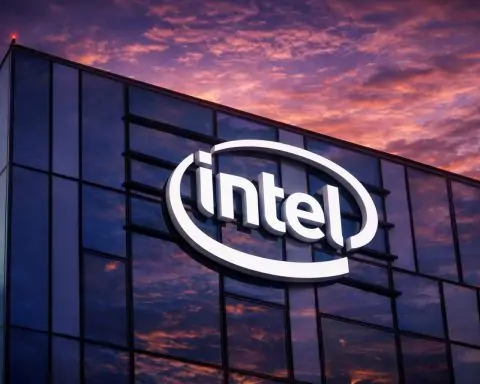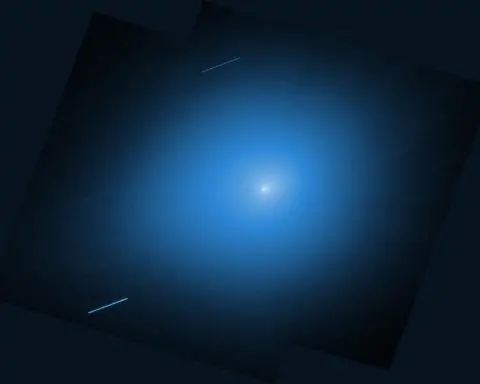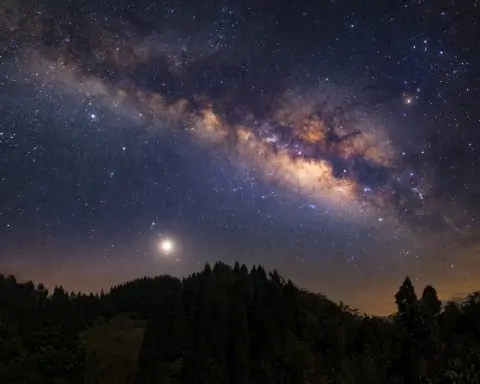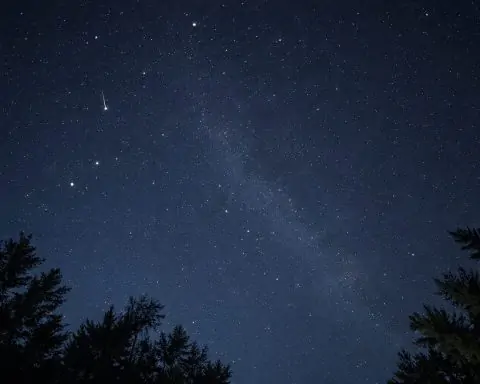- The Perseid meteor shower ran July 17–August 23, 2025, but its peak was washed out by the nearly full Sturgeon Moon, which NASA estimated reduced meteors by about 75%.
- Under dark skies, the Perseids would normally yield 40–50 meteors per hour, but this year observers faced about 10–20 per hour or fewer due to moonlight.
- The Aurigids begin August 28 and peak September 1, 2025, with a maximum of roughly 10 meteors per hour at the peak.
- On August 27, the Moon will occult Spica (Alpha Virginis) around 15:00 UTC for observers in parts of South America and Antarctica.
- Saturn rises in the east around 8:30 p.m. local time by late August and reaches opposition on September 21, 2025.
- Venus and Jupiter form a bright dawn pairing in August, with Venus at magnitude around -4 and Jupiter around -2, and their close approach occurred on August 11–12 at about 1° apart.
- Mercury remains visible only briefly at dawn in late August, rising 30–45 minutes before sunrise and heading toward superior conjunction in mid-September.
- A rare six-planet alignment occurred on August 21, 2025, with Mercury, Venus, Jupiter, Saturn (plus Uranus/Neptune with optics) aligned with the waning crescent Moon.
- Solar activity included an M4.5-class flare on August 25 from a sunspot rotating into view, which triggered a minor S1 radiation storm at Earth but no major Earth-directed CME.
- Geomagnetic conditions were forecast to be unsettled to active into Aug 26, with a potential G1 (Kp 5) storm that could allow auroras to be seen at high latitudes.
Meteor Showers: Perseids Fade, Aurigids on the Horizon
The famous Perseid meteor shower has just wrapped up its 2025 run (active July 17 – August 23 [1]). Unfortunately, its peak earlier this month was washed out by bright moonlight – NASA’s experts warned that the nearly full Sturgeon Moon would reduce visible meteors by 75% [2]. “The average person under dark skies could see 40–50 Perseids per hour… instead, you’re probably going to see 10 to 20 per hour or fewer, and that’s because we have a bright Moon in the sky,” explained Bill Cooke, lead of NASA’s Meteoroid Environment Office [3]. A few bright Perseid fireballs still pierced the moonlit sky in the pre-dawn hours [4] [5], but overall this was a subdued year for the Perseids.
By August 26–27, only the occasional late Perseid might be spotted under dark conditions. Looking ahead, the next meteor shower is the Aurigids, which begin on August 28 and peak on September 1. This minor shower is expected to produce at most ~10 meteors per hour at peak [6] – a far cry from the Perseids, but still worth a look for dedicated skywatchers. All meteors will appear as fast “shooting stars” streaking across the sky; no equipment is needed to enjoy them. Robert Lunsford of the American Meteor Society recommends getting comfortable to watch for meteors: “Don’t go outside and stand… Get a nice lounge chair where you’re comfortable,” he told NPR, noting that patience is key since meteors often come in spurts with lulls in between [7]. For the best viewing, find a dark area away from city lights and let your eyes adapt for ~20 minutes. Peak meteor activity is usually after midnight until dawn once the radiant (in Perseus for the Perseids, or Auriga for the Aurigids) climbs higher in the sky [8] [9]. And as Bill Cooke quips: “Look anywhere but at the Moon” to maximize your odds of spotting the fainter meteors [10]!
Planetary Line-Up and Lunar Encounters
Planets are putting on a show for late August, with spectacular sights both after sunset and before dawn. Just after sunset on August 26, look low in the west for a delicate waxing crescent Moon. Tonight the slender Moon, illuminated by earthshine (sunlight reflected from Earth), will shine between Mars and Spica – the red planet and the brightest star of Virgo, respectively [11]. Mars is faint now (only about as bright as the Big Dipper’s stars [12]) and sits low on the horizon, but the Moon’s proximity will help pinpoint it amid the twilight glow. By the next evening (Aug 27), the crescent Moon moves just to the side of Spica [13]. In fact, skywatchers in parts of South America and Antarctica will see a special event on Aug 27: the Moon will occult (pass directly in front of) Spica around 15:00 UTC, temporarily eclipsing the star from view [14]. If you’re not in the occultation zone, you’ll still see the Moon and Spica make a pretty pairing at dusk on the 27th, low in the southwest.
Meanwhile, the ringed planet Saturn is coming into prime time. By late August, Saturn rises in the east around 8:30 p.m. local time [15], meaning it’s already reasonably high by mid-evening. The planet is on approach to its opposition on September 21, 2025, when Earth passes directly between Saturn and the Sun – this is when Saturn will appear biggest and brightest of the year [16] [17]. “Saturn will be in an excellent place to observe from late August through early October,” according to EarthSky’s experts [18]. Even a small telescope will reveal Saturn’s stunning rings and moons, which are a “wondrous sight” for observers. (At opposition the rings are nearly edge-on from Earth’s perspective this year [19] [20], but they still boost Saturn’s brightness and charm.) If you have clear skies, don’t miss Saturn – look for a golden steady “star” in the east after nightfall. It climbs high through the night and is due south around 1–2 a.m., setting toward dawn. NASA notes that Saturn will be high in the southern sky by sunrise in late August [21]. Now is a great time to point a telescope at Saturn; as one NASA astronomer put it, the ringed planet is “a stunning sight if you have even a small scope.”
In the morning before sunrise, a beautiful planetary parade continues. Throughout August, Venus and Jupiter – the two brightest planets – have been gleaming side by side in the eastern pre-dawn sky [22] [23]. They had an extremely close conjunction on Aug 11–12 (just ~1° apart, one of the year’s flashiest celestial sights [24]), and although they’ve separated a bit since, they remain an eye-catching duo. Venus blazes at magnitude –4 (the brightest “star” in the sky) and Jupiter at around –2, outshining all true stars [25]. If you have clear weather on Aug 26–27, look east about 60–90 minutes before sunrise to spot these two beacon-like planets. Venus will be roughly 20–30° above the horizon (about two fist-widths at arm’s length) [26] [27], with Jupiter a few degrees higher and to Venus’s left. They do not twinkle like stars, and as dawn approaches they’ll be the last objects to fade from view [28]. (Even in light-polluted cities, Venus and Jupiter pierce the twilight – so nearly everyone can enjoy this dazzling dawn duo [29].)
Earlier this week, skywatchers were treated to a rare six-planet alignment: on Aug. 21, Mercury, Venus, Jupiter, Saturn (and Uranus/Neptune with optics) lined up with the waning crescent Moon – an event that won’t occur again until 2028 [30]. By now (Aug 26–27), Mercury is rapidly receding into the Sun’s glare after its mid-August morning appearance. It “pops up above the horizon during the second half of August” but stays very low (under 10° altitude) [31], making it challenging to see in bright twilight. If you’re attempting to spot Mercury at dawn, binoculars may help – look just above the east-northeast horizon about 30–45 minutes before sunrise. (Exercise caution and stop looking well before the Sun rises.) Mercury will be much fainter than Venus or Jupiter. By month’s end it heads toward superior conjunction (passing behind the Sun) in mid-September. Mars, as mentioned, is visible only briefly after sunset, low in the west in Virgo. NASA notes that Mars is now only ~60% as bright as it was back in May [32] – it’s fading as Earth leaves it farther behind in our orbit. After Mars sets, Saturn takes over the night, visible through dawn. And coming up in the east a few hours after midnight, Jupiter joins the sky, followed by brilliant Venus in the hours before sunrise [33]. In fact, “all the bright planets are putting on a show” this month, the EarthSky team says, with Jupiter and Venus drawing the most attention, Saturn ruling the late-night hours, Mars hugging the sunset, and Mercury making a brief cameo at dawn [34].
Aurora Alerts and Space Weather Outlook
Alongside the celestial lineup, there’s exciting space weather in play. The Sun has been active this week, keeping space weather agencies on their toes. On August 25, a new sunspot region just rotating into view blasted off an M4.5-class solar flare [35] – a moderate eruption – along with several smaller flares. This flare was located near the Sun’s northeast limb, so its eruption was not aimed toward Earth. (No major Earth-directed coronal mass ejections (CMEs) were detected from these events [36].) However, the flaring did trigger a surge in solar energetic particles: protons accelerated to near light-speed by the blast caused a minor radiation storm (S1 level) at Earth on Aug 25 [37] [38]. Such S1 solar radiation storms are mainly a concern for spacecraft and astronauts; they have minimal impact on everyday skywatching, though high-altitude flights and radio communications near the poles can experience minor disturbances [39] [40].
The most noticeable effect for skywatchers is the aurora potential. Right now, Earth is moving through a high-speed solar wind stream flowing from a gaping coronal hole on the Sun [41]. This enhanced solar wind (predicted to reach ~500–550 km/s) is buffeting Earth’s magnetic field on Aug 25–26, and NOAA forecasters expect “unsettled to active” geomagnetic conditions as a result [42]. There is even a slight chance of a G1-class geomagnetic storm (Minor storm, Kp 5) through August 26 as the solar wind peaks [43]. NOAA’s Space Weather Prediction Center issued geomagnetic alerts for this period, and experts at the U.K. Met Office concur that auroras might intensify at high latitudes under these conditions [44]. In practical terms, a G1 (Minor) geomagnetic storm means the Northern Lights (and Southern Lights in the Southern Hemisphere) could become visible farther from the poles than usual. Aurora chasers in northern Canada (Yukon, Northwest Territories, Nunavut), Alaska, Scandinavia, or far-southern New Zealand/Tasmania have the best shot at seeing auroral displays if the sky is dark and clear [45]. There’s even an outside chance that a minor aurora glow could reach northern-tier U.S. states or the north of Scotland on the horizon, though generally G1 storms keep the aurora nearer to polar regions [46] [47]. (NOAA notes that during a Kp 5 storm, auroras are “commonly visible at high latitudes (northern Michigan and Maine)” in the U.S. [48] – roughly above 50–55° geomagnetic latitude.)
No major aurora outbreak is anticipated at this time – this is a minor geomagnetic uptick, not the intense displays that stronger (G2/G3+) storms can produce. As of Aug 26, Earth’s magnetic field has been mostly quiet to unsettled (Kp 2–4) [49] [50]. Aurora activity is forecast to linger at active levels into the night of Aug 26, then settle by Aug 27 as the Earth exits the fastest part of the solar wind stream [51] [52]. In short, keep an eye on the northern (or southern) horizon if you live in a high-latitude area – you might catch a subtle green glow or modest auroral curtains rippling low in the sky. Even a minor aurora can be a beautiful sight, and photographers with long exposures might capture colorful bands that are invisible to the naked eye.
Space weather experts emphasize that the situation can change quickly if the Sun unleashes another flare or CME. “Low-to-moderate solar flare activity is expected, with more M-class flares likely as the new active region rotates into view,” says Dr. C. Alex Young, a NASA heliophysicist, in a sun activity update [53]. While an extreme X-class flare is not anticipated imminently [54], solar cycle 25 is very lively, and surprises are always possible. For the latest alerts, you can monitor NOAA’s Space Weather Prediction Center and services like Spaceweather.com, which report daily solar and auroral conditions.
Expert Tips for Skywatchers
Whether you’re hunting meteors, planets, or auroras, experienced astronomers have a few tips to maximize your enjoyment. First, know the Moon phase – a bright Moon can outshine many celestial sights. Thankfully, we are just past a new moon (Aug 23), so evenings on Aug 26–27 feature a faint crescent Moon that sets early, leaving dark skies for late-night stargazing [55]. Take advantage of these moonless hours after 9–10 p.m. for meteor watching or observing faint objects like the Milky Way and nebulae. (Fun fact: August is a great time to spot the Dumbbell Nebula (M27) in binoculars, high overhead in the Summer Triangle constellation pattern [56] [57].)
Second, timing is everything: for planets, that means dawn and dusk windows. “The real highlight of August is the close approach of Jupiter and Venus,” NASA notes [58] – so set an early alarm if you want to catch that brilliant pairing before sunrise. Conversely, be out at dusk on the 26th–27th to see the Moon with Mars and Spica before they sink below the horizon [59] [60]. For auroras, if you’re in the zone, around local midnight often brings the strongest activity under dark skies.
Finally, be patient and prepared. Dress warmly or bring blankets (late August nights can get chilly), and give your eyes time to dark-adapt. If you’re meteor hunting or scanning for faint auroras, get comfortable – as the AMS’s Robert Lunsford advises, a reclining chair can be your best friend to avoid neck strain [61]. “Sometimes you go 10 or 15 minutes without seeing anything, and then a bunch will show up at once,” Lunsford says [62]. The cosmos doesn’t run on our schedule, so relaxing and enjoying the night will make any celestial treat you do catch that much sweeter.
In summary, the nights of August 26–27, 2025, offer a little of everything for skywatchers: a graceful Moon and planet gathering at dusk, a brilliant planetary duo at dawn, the afterglow of one meteor shower and the promise of another, and even a chance at auroras dancing on the horizon. Keep your eyes on the skies – and clear skies!
Sources: NASA and JPL What’s Up skywatching guide [63] [64]; EarthSky night sky updates [65] [66]; American Meteor Society [67]; NOAA Space Weather Prediction Center alerts [68] [69]; Expert commentary via NASA’s Bill Cooke and AMS’s R. Lunsford on Perseids [70] [71]. Enjoy the show, and happy skywatching!
References
1. economictimes.indiatimes.com, 2. www.amsmeteors.org, 3. economictimes.indiatimes.com, 4. science.nasa.gov, 5. economictimes.indiatimes.com, 6. starwalk.space, 7. economictimes.indiatimes.com, 8. ts2.tech, 9. ts2.tech, 10. economictimes.indiatimes.com, 11. earthsky.org, 12. science.nasa.gov, 13. earthsky.org, 14. earthsky.org, 15. science.nasa.gov, 16. earthsky.org, 17. earthsky.org, 18. earthsky.org, 19. earthsky.org, 20. earthsky.org, 21. science.nasa.gov, 22. science.nasa.gov, 23. science.nasa.gov, 24. science.nasa.gov, 25. ts2.tech, 26. science.nasa.gov, 27. ts2.tech, 28. ts2.tech, 29. ts2.tech, 30. people.com, 31. science.nasa.gov, 32. science.nasa.gov, 33. earthsky.org, 34. earthsky.org, 35. earthsky.org, 36. earthsky.org, 37. earthsky.org, 38. earthsky.org, 39. earthsky.org, 40. earthsky.org, 41. earthsky.org, 42. earthsky.org, 43. earthsky.org, 44. www.space.com, 45. www.space.com, 46. www.space.com, 47. www.space.com, 48. www.swpc.noaa.gov, 49. earthsky.org, 50. earthsky.org, 51. earthsky.org, 52. earthsky.org, 53. earthsky.org, 54. earthsky.org, 55. science.nasa.gov, 56. science.nasa.gov, 57. science.nasa.gov, 58. science.nasa.gov, 59. earthsky.org, 60. earthsky.org, 61. economictimes.indiatimes.com, 62. economictimes.indiatimes.com, 63. science.nasa.gov, 64. science.nasa.gov, 65. earthsky.org, 66. earthsky.org, 67. www.amsmeteors.org, 68. earthsky.org, 69. www.space.com, 70. economictimes.indiatimes.com, 71. economictimes.indiatimes.com










